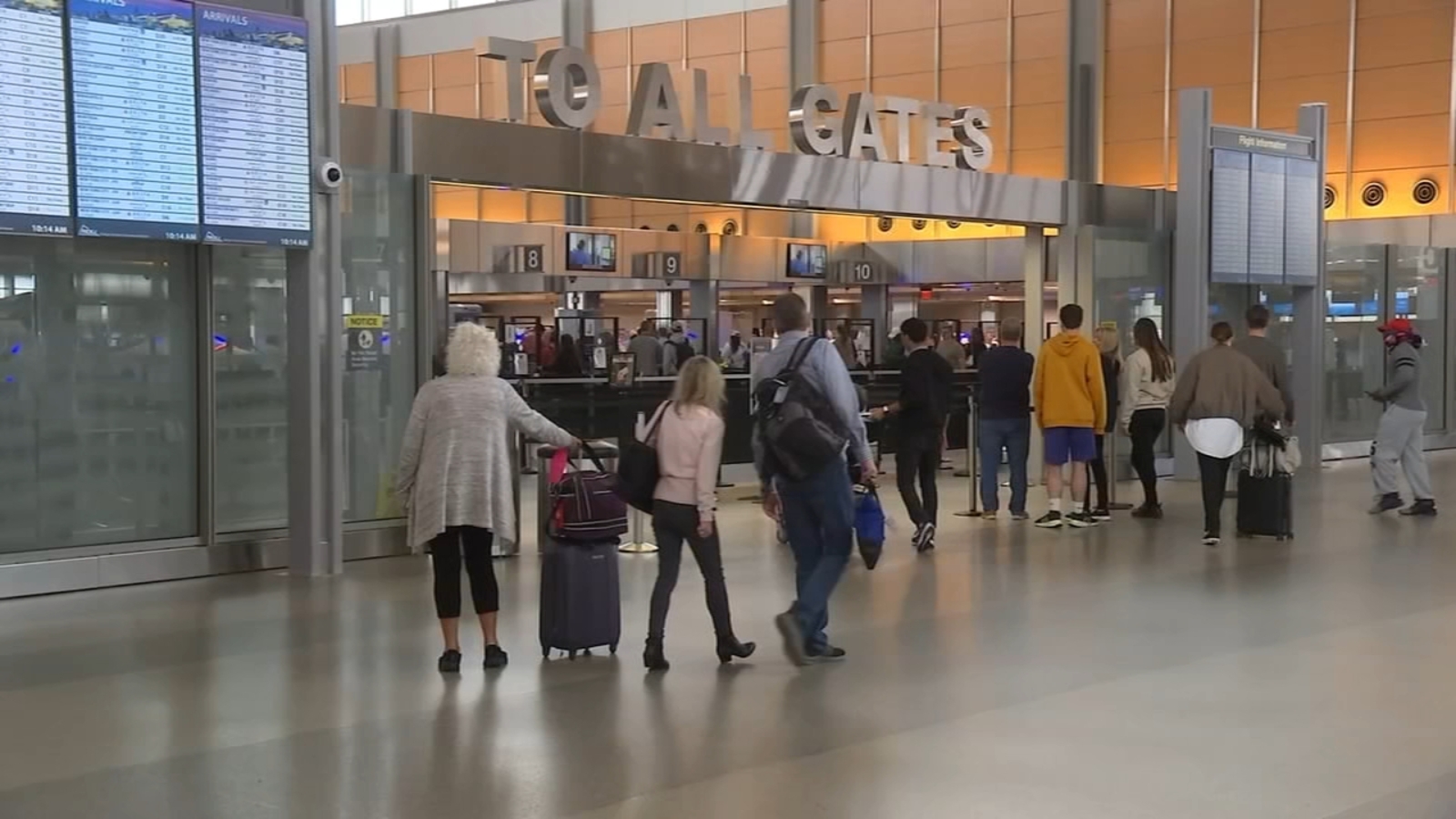Unprecedented Global Forest Loss: Wildfires And Deforestation Crisis

Table of Contents
The Devastating Impact of Wildfires on Global Forest Loss
Climate Change and Increased Wildfire Frequency
Climate change is significantly increasing the frequency and intensity of wildfires globally. Rising temperatures, prolonged droughts, and shifts in weather patterns create ideal conditions for ignition and rapid fire spread. The resulting infernos are larger, more destructive, and harder to control than ever before.
- Examples: The 2019-2020 Australian bushfires, the 2021 Northwest Pacific wildfires, and the ongoing Amazon rainforest fires are stark reminders of this escalating threat.
- Statistics: In recent years, millions of hectares of forest have been burned annually, releasing massive amounts of greenhouse gases and contributing to further climate change. Specific regions like California, Siberia, and the Mediterranean basin are particularly vulnerable.
- Impact: Increased wildfire frequency disrupts forest ecosystems, reduces biodiversity, and accelerates soil erosion.
The Ecological Consequences of Wildfires
Wildfires have profound and long-lasting ecological consequences. Beyond the immediate devastation, the effects ripple through entire ecosystems.
- Biodiversity Loss: Many plant and animal species are unable to adapt or survive the intense heat and destruction, leading to irreversible biodiversity loss. Endemic species in particular are highly vulnerable.
- Soil Erosion: Burned landscapes are prone to severe soil erosion, reducing soil fertility and impacting water quality. This can lead to decreased agricultural productivity and increased sedimentation in rivers.
- Air Quality: Wildfires release massive amounts of smoke and pollutants into the atmosphere, negatively impacting air quality and human health, causing respiratory illnesses and cardiovascular problems.
- Greenhouse Gas Emissions: Burning forests release significant amounts of carbon dioxide, methane, and other greenhouse gases into the atmosphere, exacerbating climate change and creating a vicious cycle.
Preventing and Managing Wildfires
Effective wildfire prevention and management strategies are crucial to mitigating the devastating impacts of these events.
- Controlled Burns: Prescribed burns, conducted under controlled conditions, can help reduce fuel loads and prevent larger, more destructive wildfires.
- Improved Forest Management: Sustainable forest management practices, such as thinning dense forests and creating firebreaks, can significantly reduce wildfire risk.
- Community Preparedness: Educating communities about wildfire risks and developing effective evacuation plans are vital for protecting lives and property.
- Technology: Early wildfire detection systems using satellites and aerial surveillance, coupled with advanced firefighting technologies, are crucial for rapid response and containment.
Deforestation: A Major Driver of Global Forest Loss
Drivers of Deforestation
Deforestation, the clearing of forests for other land uses, is a primary driver of global forest loss. Several factors contribute to this alarming trend.
- Agriculture: The expansion of agricultural land for cattle ranching, palm oil plantations, and soy production is a major cause of deforestation, particularly in the Amazon and Southeast Asia.
- Logging: Illegal and unsustainable logging practices deplete forest resources and leave landscapes vulnerable to degradation and wildfires.
- Mining: Mining operations often involve clearing vast areas of forest, leading to habitat destruction and soil erosion.
- Infrastructure Development: The construction of roads, dams, and other infrastructure projects often encroaches upon forested areas.
- Statistics: The Amazon rainforest, the Congo Basin, and Southeast Asia are experiencing some of the highest rates of deforestation globally.
The Socioeconomic Impacts of Deforestation
Deforestation has severe socioeconomic consequences, impacting the livelihoods and well-being of communities worldwide.
- Loss of Livelihoods: Indigenous communities and local populations who depend on forests for their livelihoods often face displacement and economic hardship.
- Food Security: Deforestation can reduce agricultural productivity and biodiversity, impacting food security and increasing the risk of malnutrition.
- Displacement of Communities: Forest clearing often leads to the displacement of indigenous populations and other communities who call the forests their home.
Sustainable Forestry Practices and Reforestation
Transitioning to sustainable forestry practices and undertaking large-scale reforestation efforts are crucial to combat deforestation.
- Sustainable Logging: Implementing sustainable logging practices, such as selective logging and replanting programs, ensures the long-term health of forests.
- Reforestation Projects: Large-scale reforestation initiatives can help restore degraded forests and increase carbon sequestration.
- Certification Schemes: Certification schemes, like the Forest Stewardship Council (FSC), promote sustainable forest management and help consumers make informed choices.
The Interconnectedness of Wildfires and Deforestation: A Vicious Cycle
Deforestation and wildfires are intricately linked in a dangerous feedback loop. Deforestation creates fragmented and degraded forests that are more susceptible to wildfires. In turn, wildfires accelerate deforestation by destroying existing vegetation and making the land more vulnerable to further degradation.
- Degraded Forests: Fragmented forests and those lacking biodiversity are more vulnerable to wildfires due to increased fuel loads and reduced resilience.
- Hindered Regeneration: Wildfires can hinder forest regeneration, making it difficult for forests to recover from disturbances. This creates a landscape more susceptible to future fires and deforestation.
Conclusion
The unprecedented global forest loss we are witnessing is a critical environmental crisis, driven by the intertwined forces of wildfires and deforestation. The consequences are far-reaching, impacting climate change, biodiversity, and human well-being. We must act urgently and decisively to protect our forests.
Combat global forest loss by supporting sustainable initiatives, advocating for stronger environmental policies, and demanding accountability from governments and corporations. Support organizations dedicated to reforestation and forest conservation, reduce your carbon footprint, and promote sustainable consumption patterns. Let's work together to safeguard our planet's irreplaceable forests for future generations. [Link to relevant organization].

Featured Posts
-
 Stock Market Dip Rising Unease Over Us Finances
May 23, 2025
Stock Market Dip Rising Unease Over Us Finances
May 23, 2025 -
 Canadian Automotive Industry Responds To Trumps Threats With Call For Stronger Action
May 23, 2025
Canadian Automotive Industry Responds To Trumps Threats With Call For Stronger Action
May 23, 2025 -
 Find The Best Memorial Day Deals 2025 A Shopping Editors Curated List
May 23, 2025
Find The Best Memorial Day Deals 2025 A Shopping Editors Curated List
May 23, 2025 -
 Englands Unwavering Support For Zak Crawley Amid Poor Form
May 23, 2025
Englands Unwavering Support For Zak Crawley Amid Poor Form
May 23, 2025 -
 Weekend Events Fashion Heritage Ballet And Punny Fun
May 23, 2025
Weekend Events Fashion Heritage Ballet And Punny Fun
May 23, 2025
Latest Posts
-
 Cheapest And Busiest Flight Days Memorial Day Travel 2025
May 24, 2025
Cheapest And Busiest Flight Days Memorial Day Travel 2025
May 24, 2025 -
 Planning Your Memorial Day Trip In 2025 Air Travel Tips
May 24, 2025
Planning Your Memorial Day Trip In 2025 Air Travel Tips
May 24, 2025 -
 Planning Your Memorial Day Trip The Best And Busiest Flight Days In 2025
May 24, 2025
Planning Your Memorial Day Trip The Best And Busiest Flight Days In 2025
May 24, 2025 -
 Memorial Day 2025 Travel Best And Worst Days To Fly
May 24, 2025
Memorial Day 2025 Travel Best And Worst Days To Fly
May 24, 2025 -
 Avoid Memorial Day Travel Chaos Best And Worst Flight Days In 2025
May 24, 2025
Avoid Memorial Day Travel Chaos Best And Worst Flight Days In 2025
May 24, 2025
